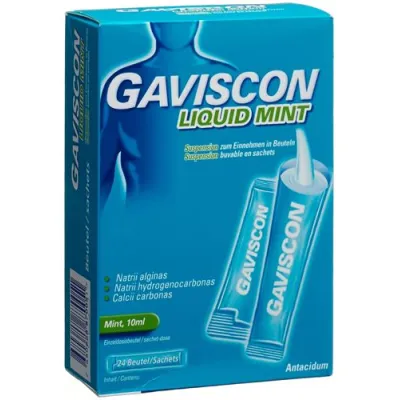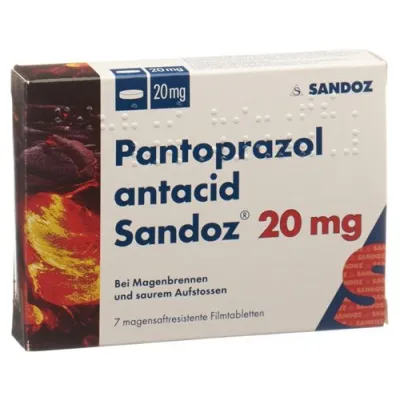Acid reflux
(1 Pages)
Dr. jacob's base powder plus
Dr. Jacob's Basenpulver plus 300 g Do you suffer from heartburn, acid reflux, or indigestion? Dr. Jacob's Basenpulver plus 300 g may be the solution for you. This natural and easy-to-digest supplement is designed to help balance your body's pH levels, promoting a healthy and alkaline environment in your digestive system. What is Dr. Jacob's Basenpulver plus 300 g? Dr. Jacob's Basenpulver plus 300 g is a high-quality alkaline mineral supplement designed to balance the pH levels in your body. This formula contains a blend of essential minerals, such as potassium, calcium, and magnesium, which work together to support healthy digestion and overall well-being. Benefits of Dr. Jacob's Basenpulver plus 300 g Helps maintain a healthy pH balance in the body Supports healthy digestion and gut health Promotes healthy energy levels and overall well-being May help reduce symptoms of heartburn, acid reflux, and indigestion How to Use Dr. Jacob's Basenpulver plus 300 g Dr. Jacob's Basenpulver plus 300 g is easy to use. Simply mix one teaspoon (5g) of the powder with a glass of water or juice and consume once or twice a day, preferably between meals. For best results, it is recommended to take the supplement consistently over a period of several weeks. Ingredients The ingredient list for Dr. Jacob's Basenpulver plus 300 g includes: Sodium bicarbonate Potassium bicarbonate Calcium citrate Magnesium citrate This supplement is vegan and free from artificial colors, flavors, preservatives, and common allergens. Conclusion With its natural blend of essential minerals, Dr. Jacob's Basenpulver plus 300 g is an effective solution for anyone looking to improve their digestive health and overall well-being. This supplement is easy to use, safe, and backed by science, making it a trusted choice for health-conscious individuals. ..
59.92 USD
Ecofenac sandoz lipogel 1%tb 100g
What is Ecofenac Sandoz Lipogel and when is it used?Ecofenac Sandoz Lipogel contains the active substance diclofenac, which belongs to a group of medicines called non-steroidal anti-inflammatory drugs (painkillers and anti-inflammatory drugs). . Ecofenac Sandoz Lipogel has painstilling and anti-inflammatory properties and thanks to the watery-alcoholic basis has a soothing, cooling effect. ecofenac Sandoz Lipogel is used to treat pain, inflammation and swelling at: Injuries, ligaments, ligaments and ligaments and Joints e.g. sprains, bruises, strains or back pain after sports or accident; Localized forms of soft tissue rheumatism, such as tendinitis (tennisel arch), shoulder-hand syndrome, bursitis, periarthropathies; and for symptomatic therapy of arthrosis of small and medium-sized joints, such as finger joints or knee . ..
22.21 USD
Gaviscon liquid mint susp in bags 24 bags 10 ml
Gaviscon Liquid Mint Suspension in Bags - 24 x 10ml Bottles Experience relief from heartburn and reflux with Gaviscon Liquid Mint Suspension in Bags. This product comes in a convenient 24-pack of 10ml bottles, making it easy to take with you on-the-go. The liquid formula helps soothe the burning sensation associated with heartburn, while also creating a protective barrier to prevent acid reflux. Key Features: Relieves heartburn and acid reflux symptoms Contains sodium alginate, sodium hydrogen carbonate, and calcium carbonate Mint-flavored for a refreshing taste Can be taken anytime, anywhere Comes in a convenient 24-pack of 10ml bottles How it Works: Gaviscon Liquid Mint Suspension in Bags works to neutralize the acid in your stomach, preventing it from flowing back up into your esophagus and causing discomfort. The sodium alginate in this formula forms a protective barrier over your stomach contents to keep acid from coming into contact with your throat. The sodium hydrogen carbonate and calcium carbonate work together to neutralize excess stomach acid, relieving symptoms of heartburn and acid reflux. Directions: Shake the bottle before use. Take 5-10ml (one or two 5ml spoonfuls) after meals and at bedtime, up to four times per day. If symptoms persist, consult your doctor. Ingredients: Sodium Alginate Sodium Hydrogen Carbonate Calcium Carbonate Carbomer Methyl Parahydroxybenzoate (E218) Propyl Parahydroxybenzoate (E216) Sodium Saccharin Peppermint Flavor Purified Water Experience fast and effective relief from heartburn and acid reflux symptoms with Gaviscon Liquid Mint Suspension in Bags. Order your 24-pack of 10ml bottles today!..
70.81 USD
Hübner silicea stomach intestine direct gel 30 stick 15 ml
Hübner Silicea Stomach Intestine Direct Gel 30 Stick 15 ml is a premium health supplement expertly formulated by the trusted brand, Huebner. Designed to support your body's digestive system, this potent gel comes in convenient stick packets, perfect for on-the-go use. Key features of the Hübner Silicea Stomach Intestine Direct Gel include: Natural Silica: This essential mineral is known to benefit digestive health by supporting the structural integrity of the gastrointestinal tract. Easy to Use: The gel comes in individual stick packets, making it simple and convenient to incorporate into your daily routine. High Quality: Manufactured by Huebner, a brand renowned for its commitment to quality and efficacy. Great Taste: Unlike many health supplements, this gel has a neutral taste that can be easily combined with a variety of foods and beverages. Using Hübner Silicea Stomach Intestine Direct Gel can provide several benefits: Improved Digestive Health: Regular use may help to improve the overall health of your stomach and intestines. Increased Nutrient Absorption: Silica is believed to aid in the absorption of nutrients, helping to ensure that your body gets the most from the foods you consume. Convenience: The individually packaged sticks are perfect for busy people who want to maintain their health while on the move. Here's how you can incorporate Hübner Silicea Stomach Intestine Direct Gel into your daily routine: Take one stick packet per day. Open the packet and squeeze the gel directly into your mouth or mix it with a beverage of your choice. For best results, take it consistently, ideally at the same time each day. Experience the benefits of a healthy digestive system with Hübner Silicea Stomach Intestine Direct Gel 30 Stick 15 ml. Your body will thank you!..
51.82 USD
Luvos healing earth ultra internal powder 380 g
Luvos® Healing Earth Ultra is loess and was processed without any admixture. Luvos® Healing Earth Ultra is used for acidification of the stomach, heartburn and diarrhea. Luvos® Healing Earth Ultra binds pollutants that are in the intestines and stomach. The fineness of the Luvos® Healing Earth Ultra gives it a large overall surface. This surface guarantees its absorption capacity for pollutants. Swissmedic-approved patient information Luvos® Healing Earth Ultra for oral use, powder Dr. Dünner AGWhat is Luvos Heilerde Ultra for oral use and when is it used? Luvos® Heilerde Ultra is loess and was processed without any admixture. Luvos® Healing Earth Ultra is used for acidification of the stomach, heartburn and diarrhea. Luvos® Healing Earth Ultra binds pollutants that are in the intestines and stomach. The fineness of the Luvos® Healing Earth Ultra gives it a large overall surface. This surface guarantees its absorption capacity for pollutants. When should Luvos Heilerde Ultra not be used? Luvos® Heilerde Ultra should not be taken if you have already reacted sensitively to loess preparations. Luvos® Healing Earth Ultra should not be used in the case of severe kidney disease. If you have impaired kidney function, you should ask your doctor for advice. Do not use in acute diarrhea with high fever or blood, or in children under 2 years of age. When should you be careful when taking Luvos Heilerde Ultra for oral use? Since the actual property of Luvos® Heilerde Ultra is the adsorption of harmful substances, Luvos® Medicinal products taken at the same time can also be absorbed. There should therefore be as much time as possible between taking Luvos® Heilerde Ultra and other medicines (about 2 hours). A doctor should be consulted if acute or long-lasting symptoms or unclear symptoms in the gastrointestinal area occur. In the treatment of diarrhea, particularly in adolescents and the elderly, fluid and electrolyte replacement must be considered the most important therapeutic measure. In general, you should see a doctor if you have diarrhea that lasts longer than two days, contains blood or is accompanied by fever and circulatory disorders. Tell your doctor, pharmacist or druggist if you -suffer from other diseases, ? have allergies or -Take other medicines (including those you bought yourself!). Can Luvos Healing Earth Ultra be taken orally during pregnancy or breastfeeding? Based on previous experience, there is no known risk for the child if used as intended. However, systematic scientific investigations have never been carried out. As a precaution, you should avoid taking medicines during pregnancy and breastfeeding or ask your doctor, pharmacist or druggist for advice. How do you use Luvos Heilerde Ultra for oral use? Adults and young people over the age of 12 take 1-2 teaspoons of Luvos® Heilerde Ultra 1 to several times a day. Luvos® Healing Earth Ultra is suspended in ¼ to ½ glass of cold or warm water (also in mineral water or unsweetened herbal tea, but not in milk or hot drinks) and taken in sips. Luvos® Healing Earth Ultra is best taken before meals or in the evening before going to bed. Stick to the dosage given in the package leaflet or as prescribed by your doctor. If you think the medicine is too weak or too strong, talk to your doctor, pharmacist or druggist. What side effects can Luvos Heilerde Ultra for oral use have? Luvos Heilerde® Ultra can cause slight constipation. If you get any side effects, talk to your doctor, pharmacist or druggist. This also applies in particular to side effects that are not listed in this leaflet. What else needs to be considered? Luvos® Healing Earth Ultra easily absorbs odours. The pack must therefore be kept dry and away from strong-smelling substances. Keep out of the reach of children. Store at room temperature (15-25°C). The medicinal product may only be used up to the date marked ?EXP? on the container. Your doctor, pharmacist or druggist can provide you with further information. What does Luvos Healing Earth Ultra for oral use contain? Active ingredients Loss. Excipients Luvos® Healing Earth Ultra contains no additives. Approval number 8909 (Swissmedic) Where can you get Luvos Heilerde Ultra for oral use? What packs are available? This is an over-the-counter medicine. Luvos® Healing Earth Ultra for oral use, powder, 380g. Authorization holder Dr. Thin AG CH-6403 Küssnacht am Rigi Address: Artherstrasse 60 CH-6405 Immensee Manufacturer Healing Earth SocietyLuvos Just GmbH & Co. KG This leaflet was last checked by the drug authority (Swissmedic) in February 2020. ..
41.60 USD
Pantoprazole antacid sandoz film-coated tablets 20 mg 7 pcs
What is Pantoprazole antacid Sandoz and when is it used? The active ingredient in Pantoprazole antacid Sandoz, pantoprazole, belongs to the class of proton pump inhibitors. It blocks the enzyme responsible for releasing acid in the stomach (the proton pump).Pantoprazole Sandoz is used in adults for the short-term treatment of the symptoms of burning and acid reflux caused by stomach acid flowing back up the esophagus.When should Pantoprazole Sandoz not be taken?Do not use Pantoprazole Sandoz with known hypersensitivity to the active ingredient pantoprazole, other proton pump inhibitors or one of the excipients of Pantoprazole antacid Sandoz. Pantoprazole antacid Sandoz must not be taken by children and adolescents. Pantoprazole antacid Sandoz should only be taken during pregnancy and breastfeeding after consulting a doctor.When is caution required when taking Pantoprazole antacid Sandoz?Please inform your doctor immediately in the following situations:unintentional, unexplainable weight loss,inexplicable pale appearance and feeling of weakness (An aemia),if you have blood in your stools or if your stools are black in colour,difficulty swallowing,repeated vomiting,vomiting blood,stomach pain,severe and/or persistent diarrhoea,the appearance of a skin rash, especially in sun-exposed areas of the skin, as you may need to stop treatment with Pantoprazole antacid Sandoz. Don't forget to mention other symptoms, such as joint pain.Please talk to your doctor before taking Pantoprazole Sandoz if you have:if you have already had a stomach ulcer or an operation on your gastrointestinal tract,if you have been taking a medicine for indigestion or acid reflux for 4 weeks or more continuously,if you have jaundice or liver problems,if you have any other co-existing serious illness,if you are about to have an endoscopic examination (e.g. gastroscopy or breath test),you are older than 55 years and treat digestive disorders with non-prescription medicines on a daily basis,you are older than 55 years of age and have new or recently changed symptoms,if you have ever had a treatment with pantoprazole anta cid Sandoz, which also reduces stomach acid, have experienced skin reactions.Pantoprazole antacid Sandoz can affect the effectiveness of other medicines. Therefore, tell your doctor, pharmacist or druggist if you are taking other medicines, such as:medicines for fungal infections,erlotinib for the treatment of certain types of ,methotrexate for ,medicines to thin the blood or medicines for HIV infections (e.g Atazanavir, ritonavir).Concomitant use of these medicines should be avoided.Do not take Pantoprazole Sandoz with other medicines that reduce the amount of acid in the stomach, such as another proton pump inhibitor (omeprazole, lansoprazole or rabeprazole) or an H2 antagonist (e.g. ranitidine).However, if necessary, you may use Pantoprazole antacid Sandoz together with antacids (e.g. Magaldrat, Algic acid, sodium bicarbonate, aluminum hydroxide, magnesium carbonate or combinations thereof).If you experience side effects such as dizziness or blurred vision, you should not drive or use machines.If you take Pantoprazole antacid Sandoz for more than 3 months, it is possible that the levels of magnesium in your blood may fall. Low magnesium levels are manifested by fatigue, involuntary muscle tension, confusion, cramps, dizziness and increased heart rate. If you experience any of these side effects, please tell your doctor immediately. Low magnesium levels can also lead to a decrease in blood potassium and calcium levels. Your doctor may do regular blood tests to monitor your magnesium levels.Taking proton pump inhibitors such as Pantoprazole Sandoz, especially for more than a year, may slightly increase your risk of fractures in your hip, wrist or spine. Tell your doctor if you have osteoporosis or are taking corticosteroids (these medicines can increase the risk of osteoporosis).Tell your doctor, pharmacist or druggist if you are going to have specific blood tests (chromogranin A) before starting treatment.This medicine contains less than 1 mmol sodium (23 mg) per tablet, i.e. i.e. it is almost «sodium-free».This medicine contains the dye cochineal red A (E124) and can cause allergic reactions.Inform your doctor, pharmacist or druggist if yousuffer from other diseases,have allergies orother medicines (including those you bought yourself!) ingested or applied externally.Can Pantoprazole antacid Sandoz be taken while pregnant or breastfeeding?If you are pregnant or planning to become pregnant, or if you are breastfeeding, you must not take Pantoprazole antacid Sandoz without consulting your doctor.How do you use Pantoprazole antacid Sandoz?Take Pantoprazole antacid Sandoz always as described here. Ask your doctor, pharmacist or druggist if you are not sure.The adult dose is one enteric-coated film-coated tablet per day.It is possible that the film-coated tablets must be taken for 2-3 consecutive days in order to improve symptoms. Stop taking the tablets when you are completely symptom-free. If there is no improvement in symptoms within 2 weeks of continuous treatment, you should consult your doctor. The treatment should not last longer than 4 weeks without a doctor's consultation. Pantoprazole antacid Sandoz gastro-resistant film-coated tablets are whole 1 hour before a meal with a little water increase.If you have taken more than the recommended dose of 1 film-coated tablet per day, tell your doctor, pharmacist or druggist. There are no known symptoms of overdose.If you forget to take a tablet, do not double the dose. Instead, take the next dose at the usual time.Stick to the dosage given in the package leaflet or as prescribed by your doctor. If you think the medicine is too weak or too strong, talk to your doctor, pharmacist or druggist bbetween your doctor, pharmacist or druggist. What side effects can Pantoprazole antacid Sandoz have? Common (affects 1 to 10 users in 100) Benign growths of the gastric mucosa. Uncommon (affects 1 to 10 users in 1000) Sleep disorders, headache , dizziness, diarrhea, nausea and vomiting, flatulence and bloating, constipation, dry mouth, abdominal pain and discomfort, skin rashes, reddening of the skin, itching, weakness, tiredness or general malaise.Rare (affects 1 to 10 in 10,000 users)Immediate-type hypersensitivity reactions (dizziness, increased heart rate, sweating), weight changes , depressive moods and aggravation of pre-existing depression, taste disorders, visual disturbances and blurred vision, hives (severe itchy skin rash, hives), joint and muscle pain, enlargement of the male breasts, increased body temperature and swelling of the arms and legs due to fluid retention (oedema).Very rare (affects less than 1 in 10,000 users)Disorientation and deterioration in before Existing disorientation, especially in people who are predisposed accordingly.Individual casesDelusions and confusion in predisposed people. If these symptoms already exist, they can be made worse by Pantoprazole antacid Sandoz. Decreased levels of certain minerals in the blood, rash, which may be associated with pain in the joints.Inflammation of the large bowel causing persistent watery diarrhoea.Side effects seen in blood tests include:Raised liver function tests have been reported uncommonly.Rarely, increases in bilirubin and blood fat levels have occurred.Decrease in blood platelets have been reported very rarely, which can lead to bleeding or bruising, and a reduction in the number of white blood cells, which can cause more infections.Stop taking Pantoprazole Sandoz and see your doctor straight away if you experience any of the following side effects:Severe allergic reactions: swelling of the tongue or throat, difficulty swallowing, hives, difficulty breathing, allergic swelling of the face and throat (Quincke's edema, angioedema), severe drowsiness with a racing heart and heavy sweating.Serious skin changes such as blistering and rapid deterioration of your general condition, skin damage (including minor bleeding) of the eyes, nose, mouth and lips or genitals (Stevens-Johnson syndrome, Lyell's syndrome, erythema multiforme) and sensitivity to light.Other serious conditions : Yellowing of the skin or eyes (severe damage to liver cells, jaundice), fever, skin rash and enlarged kidneys, sometimes accompanied by painful urination and pain in the lower back (severe inflammation of the kidneys).If you get any side effects, talk to your doctor, pharmacist or druggist. This also applies in particular to side effects that are not listed in this leaflet.What else should you be aware of?The medicine may only be used up to the date marked «EXP» on the package.Storage instructionsStore in the original packaging at room temperature (15–25°C) and out of the reach of children.Your doctor, pharmacist or druggist can provide you with further information doctor, pharmacist or druggist. These people veradd the detailed product information.What does Pantoprazole antacid Sandoz contain?Active substances1 gastro-resistant film-coated tablet of Pantoprazole antacid Sandoz contains 20 mg pantoprazole as pantoprazole sodium sesquihydrate.ExcipientsCore:Sodium carbonate, microcrystalline cellulose, crosp ovidon, hydroxypropyl cellulose, highly disperse silicon dioxide, calcium stearate. Intermediate coating: Hypromellose, titanium dioxide, macrogol 400, quinoline yellow (E104), iron oxide yellow, cochineal red A (E124). Enteric coating: Methacrylic acid-ethyl acrylate copolymer (1:1), dispersion polysorbate 80, sodium dodecyl sulphate), triethyl citrate. Yellow iron oxide (E 172)Authorization number61372 (Swissmedic)Where can you get Pantoprazole antacid Sandoz? Which packs are available? In pharmacies and drugstores, without a doctor's prescription. Packs with 7 and 14 gastro-resistant film-coated tablets. Authorization holder Sandoz Pharmaceuticals AG, Risch; Domicile: RotkreuzThis leaflet was last checked by the drug authority (Swissmedic) in January 2020...
37.81 USD
Rennie peppermint lozenges 36 pcs
Rennie Peppermint Lutschtabletten 36 Stück Looking for a fast and effective relief from heartburn and indigestion? Try Rennie Peppermint Lutschtabletten! With its active ingredient calcium carbonate, Rennie Peppermint tablets work to neutralize excess acid in your stomach, relieving the discomfort of heartburn and indigestion within minutes. The peppermint flavor also helps to soothe and calm your stomach, leaving you feeling refreshed and comfortable. Rennie Peppermint tablets are easy to take and can be used anytime, anywhere, making them a convenient choice for busy people on the go. Simply place one tablet in your mouth and let it dissolve, taking up to six tablets per day as needed. Rennie Peppermint tablets are also suitable for pregnant and breastfeeding women, making them a safe and effective choice for the whole family. Get fast relief from heartburn and indigestion with Rennie Peppermint Lutschtabletten, available in a convenient pack of 36 tablets...
36.08 USD
Riopan tablets 800 mg 20 pcs
Riopan 800 is taken for burning stomach, acid reflux or a feeling of pressure and fullness in the stomach area. The active ingredient in Riopan 800, magaldrate, reduces the amount of acid, binds pepsin and bile components and eliminates the aggressive effect of gastric juice with a coating that protects the mucous membrane. Swissmedic-approved patient informationRiopan® 800 tabletsTakeda Pharma AGWhat is Riopan 800 and when is it used?Riopan 800 is taken for stomach burns, acid reflux or a feeling of pressure and fullness in the stomach area. The active ingredient in Riopan 800, magaldrate, reduces the amount of acid, binds pepsin and bile components and eliminates the aggressive effect of gastric juice with a coating that protects the mucous membrane. What should be considered?It is important to pay attention to your general lifestyle and diet. Stress and foods that are not individually beneficial, as well as excessive smoking and alcohol consumption should be avoided. When should Riopan 800 not be taken?For fructose/sorbitol intolerance; if you are known to be hypersensitive to the active substance magaldrate or to one of the excipients of the drug and if you have low serum phosphate levels (hypophosphataemia). When is caution required when taking Riopan 800?Riopan 800 must not be taken for more than 2 weeks without medical advice. Long-term use can alter blood salt levels, particularly calcium and phosphate. Patients suffering from kidney diseases may only take the preparation after consulting their doctor. In the case of long-lasting and/or recurring complaints, a doctor must examine whether a serious illness could be present. Taking Riopan 800 at the same time can reduce the absorption of many other medicines (e.g. for the heart or antibiotics). Therefore, other medicines should always be taken at least 2 hours earlier or later than Riopan 800. Acidic drinks (e.g. fruit juices, wine, effervescent tablets with citric or tartaric acid) promote the absorption of aluminum from Riopan 800. Riopan 800 should therefore not be taken together with acidic drinks if possible. This medicinal product contains 718.2 - 829.3 mg sorbitol per tablet. Sorbitol is a source of fructose. Talk to your doctor before you (or your child) take or receive this medicine if your doctor has told you that you (or your child) have an intolerance to some sugars or if you have Hereditary Fructose Intolerance (HFI) - a rare congenital condition in which a person cannot break down fructose - has been identified. The additive effect of co-administered sorbitol-containing medicinal products and dietary intake of sorbitol should be considered. Tell your doctor, pharmacist or druggist if you suffer from other illnesses,have allergies ortake other medicines (including those you bought yourself!) or use them externally!Can Riopan 800 be taken during pregnancy or while breastfeeding?As a precautionary measure, you should avoid taking medicines during pregnancy and breastfeeding, or consult a doctor, pharmacist or druggist or ask the doctor, pharmacist or druggist for advice. During pregnancy and breastfeeding, you should only take Riopan 800 after consulting your doctor. How do you use Riopan 800?Adults: In general, for mild stomach problems, a tablet of Riopan 800 is sucked or taken well chewed. The daily dose of 6400 mg magaldrate (equivalent to 8 tablets Riopan 800) should not be exceeded. The application and safety in children and adolescents has not yet been tested. Stick to the dosage given in the package leaflet or as prescribed by your doctor. If you think the medicine is too weak or too strong, talk to your doctor, pharmacist or druggist. What side effects can Riopan 800 have?Particularly at high doses, mushy stools, increased stool frequency and, in very rare cases, diarrhea and constipation can occur. Long-term use can lead to changes in blood salts, especially calcium and phosphate. Very common (affects more than 1 user in 10)Mushy stools Very rare (affects less than 1 in 10,000 users)Diarrhoea, increased magnesium level (hypermagnesaemia) If you get any side effects, talk to your doctor, pharmacist or druggist. This also applies in particular to side effects that are not listed in this leaflet. What else needs to be considered?The medicinal product may only be used up to the date marked «EXP» on the container. Storage instructionsStore at room temperature (15-25°C). Keep out of the reach of children. Your doctor, pharmacist or druggist can provide you with further information. These people have the detailed information for specialists. What does Riopan 800 contain?Active ingredients1 tablet Riopan 800: 800 mg magaldrate. ExcipientsSorbitol (718.2 - 829.3 mg), macrogol 4000, maltol, calcium behenate, flavorings. Approval number46516 (Swissmedic). Where can you get Riopan 800? What packs are available?In pharmacies and drugstores, without a doctor's prescription. Packs of 20, 50 and 100 tablets. Authorization holderTakeda Pharma AG, 8152 Opfikon This package leaflet was last checked by the medicines authority (Swissmedic) in March 2021. ..
22.51 USD
Riopan tablets 800 mg 50 pcs
Riopan 800 is taken for burning stomach, acid reflux or a feeling of pressure and fullness in the stomach area. The active ingredient in Riopan 800, magaldrate, reduces the amount of acid, binds pepsin and bile components and eliminates the aggressive effect of gastric juice with a coating that protects the mucous membrane. Swissmedic-approved patient informationRiopan® 800 tabletsTakeda Pharma AGWhat is Riopan 800 and when is it used?Riopan 800 is taken for stomach burns, acid reflux or a feeling of pressure and fullness in the stomach area. The active ingredient in Riopan 800, magaldrate, reduces the amount of acid, binds pepsin and bile components and eliminates the aggressive effect of gastric juice with a coating that protects the mucous membrane. What should be considered?It is important to pay attention to your general lifestyle and diet. Stress and foods that are not individually beneficial, as well as excessive smoking and alcohol consumption should be avoided. When should Riopan 800 not be taken?For fructose/sorbitol intolerance; if you are known to be hypersensitive to the active substance magaldrate or to one of the excipients of the drug and if you have low serum phosphate levels (hypophosphataemia). When is caution required when taking Riopan 800?Riopan 800 must not be taken for more than 2 weeks without medical advice. Long-term use can alter blood salt levels, particularly calcium and phosphate. Patients suffering from kidney diseases may only take the preparation after consulting their doctor. In the case of long-lasting and/or recurring complaints, a doctor must examine whether a serious illness could be present. Taking Riopan 800 at the same time can reduce the absorption of many other medicines (e.g. for the heart or antibiotics). Therefore, other medicines should always be taken at least 2 hours earlier or later than Riopan 800. Acidic drinks (e.g. fruit juices, wine, effervescent tablets with citric or tartaric acid) promote the absorption of aluminum from Riopan 800. Riopan 800 should therefore not be taken together with acidic drinks if possible. This medicinal product contains 718.2 - 829.3 mg sorbitol per tablet. Sorbitol is a source of fructose. Talk to your doctor before you (or your child) take or receive this medicine if your doctor has told you that you (or your child) have an intolerance to some sugars or if you have Hereditary Fructose Intolerance (HFI) - a rare congenital condition in which a person cannot break down fructose - has been identified. The additive effect of co-administered sorbitol-containing medicinal products and dietary intake of sorbitol should be considered. Tell your doctor, pharmacist or druggist if you suffer from other illnesses,have allergies ortake other medicines (including those you bought yourself!) or use them externally!Can Riopan 800 be taken during pregnancy or while breastfeeding?As a precautionary measure, you should avoid taking medicines during pregnancy and breastfeeding, or consult a doctor, pharmacist or druggist or ask the doctor, pharmacist or druggist for advice. During pregnancy and breastfeeding, you should only take Riopan 800 after consulting your doctor. How do you use Riopan 800?Adults: In general, for mild stomach problems, one tablet of Riopan 800 is sucked or taken well chewed. The daily dose of 6400 mg magaldrate (equivalent to 8 tablets Riopan 800) should not be exceeded. The application and safety in children and adolescents has not yet been tested. Stick to the dosage given in the package leaflet or as prescribed by your doctor. If you think the medicine is too weak or too strong, talk to your doctor, pharmacist or druggist. What side effects can Riopan 800 have?Particularly at high doses, mushy stools, increased stool frequency and, in very rare cases, diarrhea and constipation can occur. Long-term use can lead to changes in blood salts, especially calcium and phosphate. Very common (affects more than 1 user in 10)Mushy stools Very rare (affects less than 1 in 10,000 users)Diarrhoea, increased magnesium level (hypermagnesaemia) If you get any side effects, talk to your doctor, pharmacist or druggist. This also applies in particular to side effects that are not listed in this leaflet. What else needs to be considered?The medicinal product may only be used up to the date marked «EXP» on the container. Storage instructionsStore at room temperature (15-25°C). Keep out of the reach of children. Your doctor, pharmacist or druggist can provide you with further information. These people have the detailed information for specialists. What does Riopan 800 contain?Active ingredients1 tablet Riopan 800: 800 mg magaldrate. ExcipientsSorbitol (718.2 - 829.3 mg), macrogol 4000, maltol, calcium behenate, flavorings. Approval number46516 (Swissmedic). Where can you get Riopan 800? What packs are available?In pharmacies and drugstores, without a doctor's prescription. Packs of 20, 50 and 100 tablets. Authorization holderTakeda Pharma AG, 8152 Opfikon This package leaflet was last checked by the medicines authority (Swissmedic) in March 2021. ..
44.88 USD
Weleda amara drops bottle 50 ml
Swissmedic-approved patient information Weleda Amara drops Weleda AG Anthroposophic medicinal products AMZV When are Weleda Amara drops used? According to anthroposophical knowledge of man and nature, Weleda Amara - Drops can be used for digestive problems such as heartburn, flatulence and feeling of fullness after eating, to stimulate the flow of bile and for loss of appetite and nausea. The effect of Weleda Amara Drops is based on a balanced mixture of medicinal plants with tonic (invigorating) and aromatic bitter substances, which are suitable for stimulating digestion. Weleda Amara drops gently stimulate the secretion of saliva and gastric juice, promote the formation and secretion of bile and thereby facilitate the digestion of fats. They are also effective against flatulence and cramps. What should you watch out for? If your doctor has prescribed other medicines for you, ask your doctor or pharmacist whether Weleda Amara drops may be taken at the same time. When should Weleda Amara drops not be taken or only with caution? Weleda Amara drops should not be used if you are hypersensitive to one of the ingredients. Tell your doctor, pharmacist or druggist if you – Suffering from other diseases, – Have allergies or – Take other medicines (including those you bought yourself!). Can Weleda-Amara drops be taken during pregnancy or while breastfeeding? Based on previous experience, there is no known risk for the child when used as intended. However, systematic scientific investigations have never been carried out. As a precaution, you should avoid taking medicines during pregnancy and breastfeeding or ask your doctor, pharmacist or druggist for advice. How do you use Weleda Amara drops? Unless otherwise prescribed by the doctor, take Weleda Amara drops undiluted or in a little water: Adults and adolescents from 12 years: 10-15 drops. Children aged 6+: 5-8 drops. In case of loss of appetite: approx. ¼ hour before eating. For heartburn, flatulence and feeling of fullness: approx. 1 hour after eating. Follow the dosage given in the package leaflet or as prescribed by your doctor. If the desired improvement does not occur during the treatment of a small child/child, a doctor should be consulted with him or her. If you think the medicine is too weak or too strong, talk to your doctor, pharmacist or druggist. What side effects can Weleda Amara drops have? Up to now, no side effects have been observed for Weleda Amara drops when used as intended. If you do notice any side effects, tell your doctor, pharmacist or druggist. What else needs to be considered? If the symptoms worsen or there is no improvement, discontinue Weleda Amara drops and inform your doctor or pharmacist . Shake the bottle before use. A slight turbidity of the dropping liquid is normal and does not mean a loss of quality. Keep the medicine out of the reach of children. Store at room temperature (15-25°C) and away from moisture. The medicinal product may only be used up to the date marked «EXP» on the container. Your doctor, pharmacist or druggist can provide you with further information. What does Weleda Amara drops contain? 1 g drop liquid contains: ethanolic extract from: 20 mg whole fresh chicory and 20 mg dried yarrow herb and 20 mg whole fresh Dandelion and 15 mg fresh gentian root and 10 mg dried sage leaves and 5 mg fresh wormwood herb and 5 mg fresh masterwort rootstock and 2.5 mg fresh centaury and 0.5 mg dried juniper shoot tips. Excipients: purified water, alcohol. Contains 47% alcohol by volume. Approval number 11787 (Swissmedic) Where can you get Weleda Amara drops? What packs are available? Available in pharmacies and drugstores without a doctor's prescription. Drop bottles of 50ml. Authorization holder Weleda AG, Arlesheim, Switzerland This leaflet was last checked by the drug authority (Swissmedic) in June 2005. Swissmedic-approved patient information Weleda Amara drops Weleda AG Anthroposophic medicinal products AMZVWhen are Weleda Amara drops used?According to anthroposophical knowledge of man and nature, Weleda Amara - Drops can be used for digestive problems such as heartburn, flatulence and feeling of fullness after eating, to stimulate the flow of bile and for loss of appetite and nausea. The effect of Weleda Amara Drops is based on a balanced mixture of medicinal plants with tonic (invigorating) and aromatic bitter substances, which are suitable for stimulating digestion. Weleda Amara drops gently stimulate the secretion of saliva and gastric juice, promote the formation and secretion of bile and thereby facilitate the digestion of fats. They are also effective against flatulence and cramps. What should you watch out for?If your doctor has prescribed other medicines for you, ask your doctor or pharmacist whether Weleda Amara drops may be taken at the same time. When should Weleda Amara drops not be taken or only with caution?Weleda Amara drops should not be used if you are hypersensitive to one of the ingredients. Tell your doctor, pharmacist or druggist if you – Suffering from other diseases, – Have allergies or – Take other medicines (including those you bought yourself!). Can Weleda-Amara drops be taken during pregnancy or while breastfeeding?Based on previous experience, there is no known risk for the child when used as intended. However, systematic scientific investigations have never been carried out. As a precaution, you should avoid taking medicines during pregnancy and breastfeeding or ask your doctor, pharmacist or druggist for advice. How do you use Weleda Amara drops?Unless otherwise prescribed by the doctor, take Weleda Amara drops undiluted or in a little water: Adults and adolescents from 12 years: 10-15 drops. Children aged 6+: 5-8 drops. In case of loss of appetite: approx. ¼ hour before eating. For heartburn, flatulence and feeling of fullness: approx. 1 hour after eating. Follow the dosage given in the package leaflet or as prescribed by your doctor. If the desired improvement does not occur during the treatment of a small child/child, a doctor should be consulted with him or her. If you think the medicine is too weak or too strong, talk to your doctor, pharmacist or druggist. What side effects can Weleda Amara drops have?Up to now, no side effects have been observed for Weleda Amara drops when used as intended. If you do notice any side effects, tell your doctor, pharmacist or druggist. What else needs to be considered?If the symptoms worsen or there is no improvement, discontinue Weleda Amara drops and inform your doctor or pharmacist . Shake the bottle before use. A slight turbidity of the dropping liquid is normal and does not mean a loss of quality. Keep the medicine out of the reach of children. Store at room temperature (15-25°C) and away from moisture. The medicinal product may only be used up to the date marked «EXP» on the container. Your doctor, pharmacist or druggist can provide you with further information. What does Weleda Amara Drops contain?1 g drop liquid contains: ethanolic extract from: 20 mg whole fresh chicory and 20 mg dried yarrow herb and 20 mg whole fresh Dandelion and 15 mg fresh gentian root and 10 mg dried sage leaves and 5 mg fresh wormwood herb and 5 mg fresh masterwort rootstock and 2.5 mg fresh centaury and 0.5 mg dried juniper shoot tips. Excipients: purified water, alcohol. Contains 47% alcohol by volume. Approval number11787 (Swissmedic) Where can you get Weleda Amara drops? What packs are available?Available in pharmacies and drugstores without a doctor's prescription. Drop bottles of 50ml. Authorization holderWeleda AG, Arlesheim, Switzerland This leaflet was last checked by the drug authority (Swissmedic) in June 2005. ..
75.25 USD
(1 Pages)










